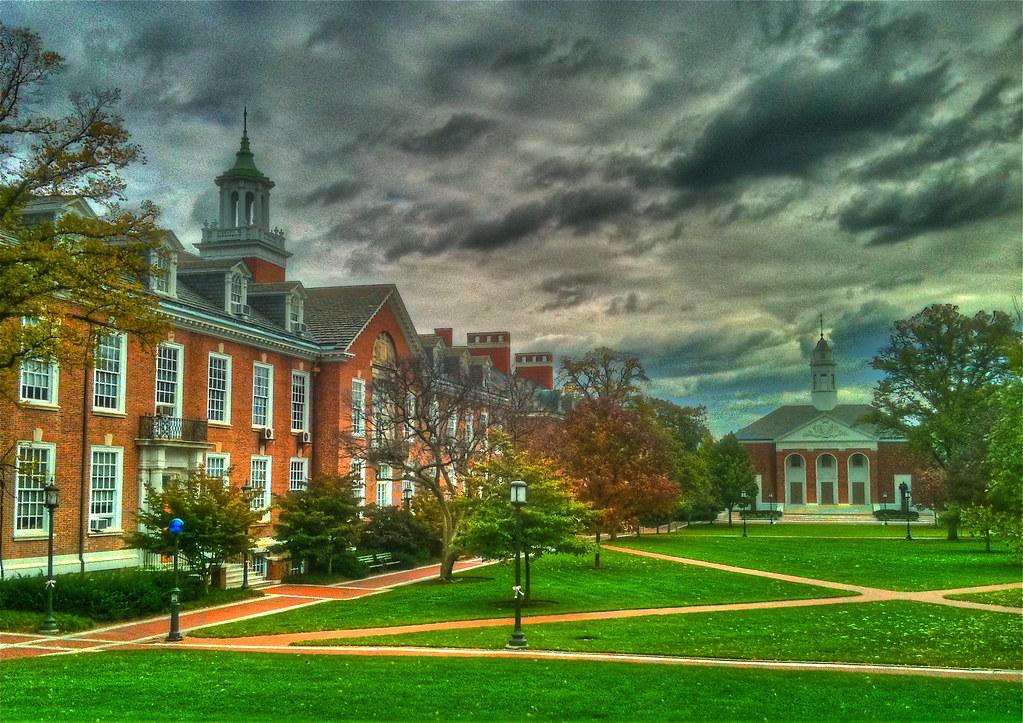A group of 13 students from the Georgetown University physics department attended the inaugural Women in Physics Summit that Johns Hopkins University’s Bloomberg Center for Physics and Astronomy hosted Sep. 9.
The summit featured multiple speaker and panel discussions, including talks with Paule Sonnentrucker, a physicist who works closely with NASA’s Hubble telescope, and Julie Crooke, who manages Goddard’s Internal Research and Development Program. The summit highlighted sensational women in physics like Sonnentrucker and Crooke in the Baltimore area and sparked further conversation about inequities in STEM.
The panel sessions were dedicated to answering audience questions about how to navigate being a woman in physics, while the speaker talks centered on the stories of individual women and how they struggled with discrimination, imposter syndrome, and building relationships inside and outside of their work.
Amy Dai (CAS ’27), a student who attended the summit, said she was looking to get to know more people in the physics community through the event.
“This was the first time I’ve attended an event like this,” Dai told The Hoya. “It was really cool to be able to share the experience of learning about physics with other excited members of the Georgetown community.”
According to Dai, the summit highlighted the journey and struggle of being a woman in physics. Dai said she appreciated that the summit brought inequities in STEM, like prejudiced comments and actions, to light.
“It’s nice that they’re trying to emphasize our presence in this community, and to show that we should have the same opportunity to participate in physics,” Dai said.
Leah Chen (CAS ’25), who also attended the event, said she appreciated the summit’s emphasis on the support system for women in physics.
“I felt validated in knowing that there will inevitably be different barriers to success, but that there is a big community of people to lean on and draw support from,” Chen wrote to The Hoya.

Chen emphasized the importance of celebrating women in STEM because of the unique perspectives people from different backgrounds bring.
“Diversity in identity in physics is really important, because it encourages diverse perspectives and thinking which paves the way for more efficient research teams and contributions,” Chen wrote. “It’s important to talk about women in physics to build a strong sense of community both by validating adverse experiences and by creating a space for encouragement and empowerment.”
Thy Le (GRD ’26) said she has had a lot of experience attending physics conferences throughout her academic career, but noted that this summit had a greater impact on the physics community than completely technical conferences, because of the summit’s willingness to address systemic issues.
“At typical physics conferences, the only topic of discussion is the physics.” Le wrote to The Hoya. “At women in physics conferences such as this one, we discuss not only physics but we also talk about the issues that we had to overcome at our work environments.”
Le said these problems originate from the systemic differences between genders in physics, which need to be addressed by all physicists.
“We still have situations where women in physics are treated unfairly and held to a different standard than men in physics,” Le wrote.
According to Le, each speaker briefly touched on their work in physics, leaving the majority of the session dedicated to their story and how they got to the point where they did. Le appreciated the vulnerability of the conference and how sharing personal experiences was empowering for attendees.
“It’s really powerful: the ability to just tell the story as it was, without having to justify anything, and for your listeners to believe you,” Le wrote.
Another event at the summit was a poster session, a dedicated time for event attendees to share their own research. Chen presented her poster on nanoparticle research, and although she has presented her research at multiple conferences, she said she continues to enjoy the experience of poster sessions.
“I’m grateful that I have had many opportunities to present my research and great experiences doing so,” Chen wrote. “I love to share my work, but also to attend these conferences and learn about other people’s research interests as well.”
The conference fueled Chen’s excitement to continue research, after hearing about the stories of women who have excelled in their own research.
“I felt really inspired by hearing from women who were able to overcome such adversity and who are able to make such big contributions to physics research,” Chen wrote.
According to Chen, there is still a long way to go to reaching equality in STEM, but events like the Women in Physics summit are important to further the conversation on inequities in physics.
“Acknowledging inequities that are often directed towards women is the first step towards equal representation in the field,” Chen wrote.








